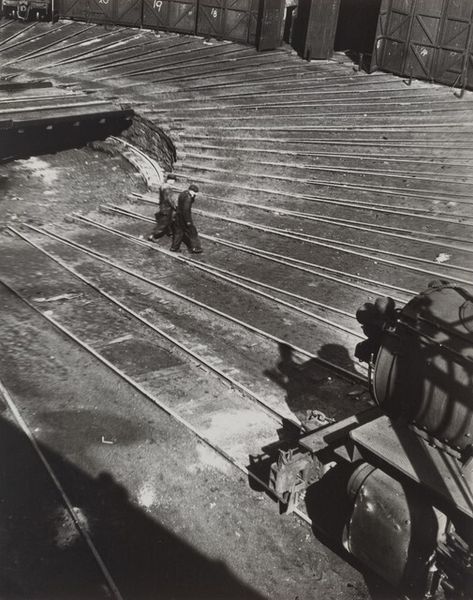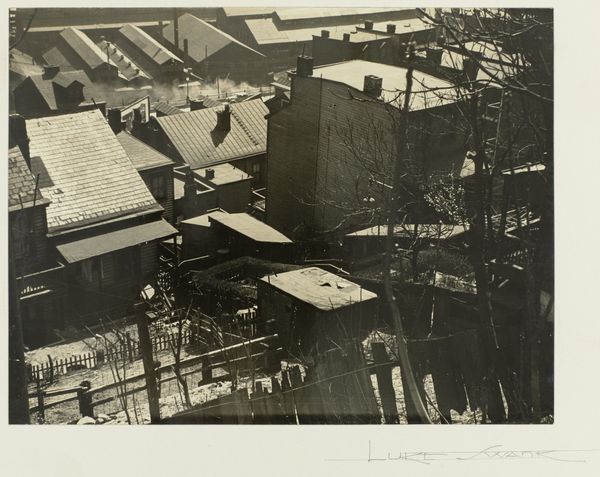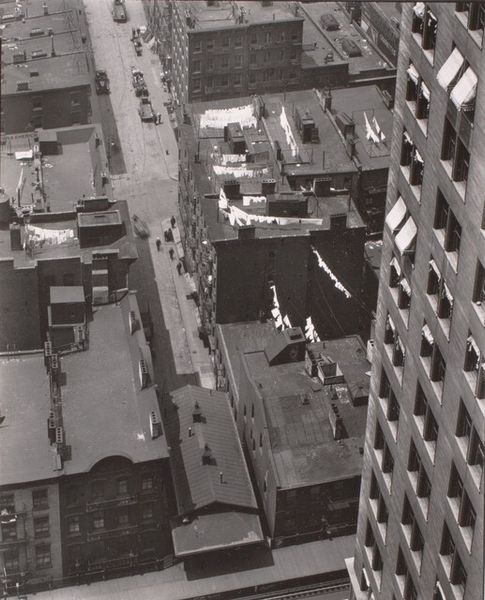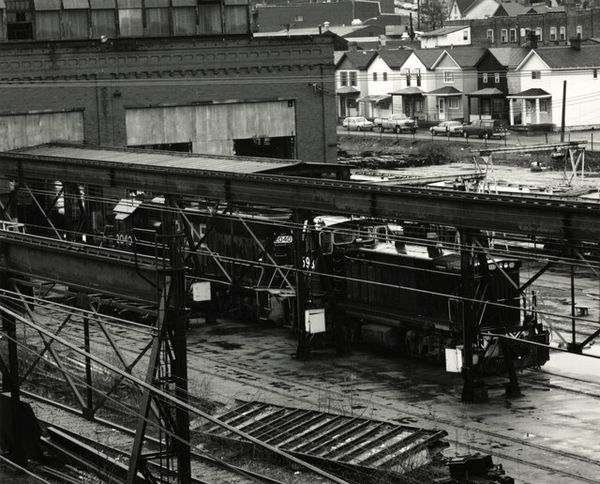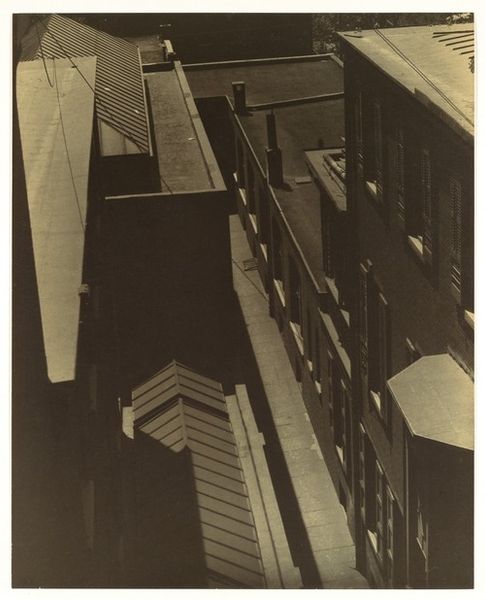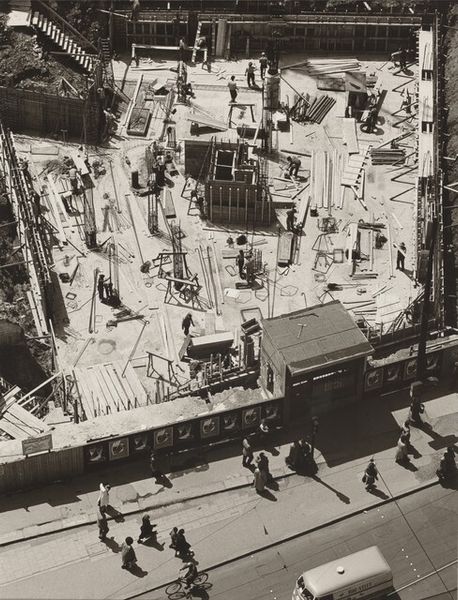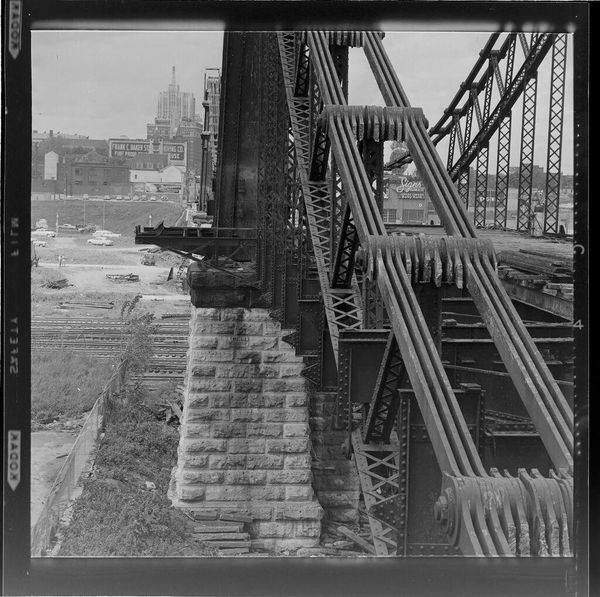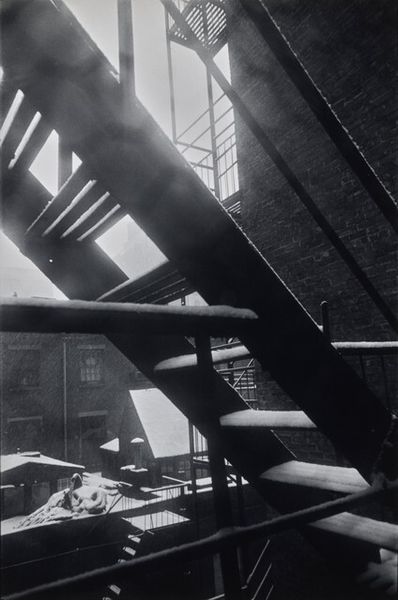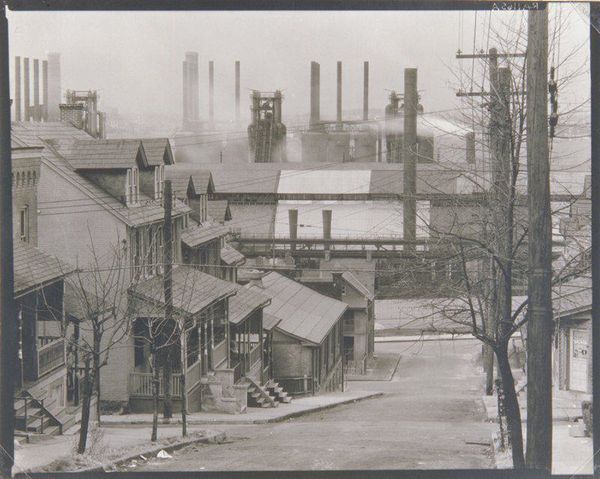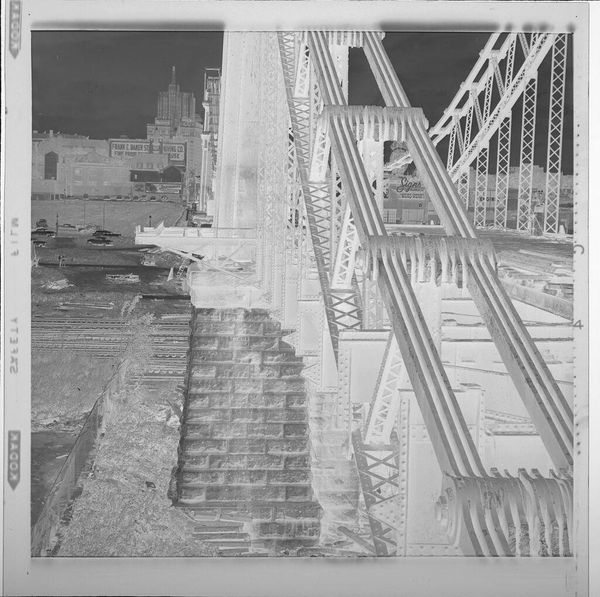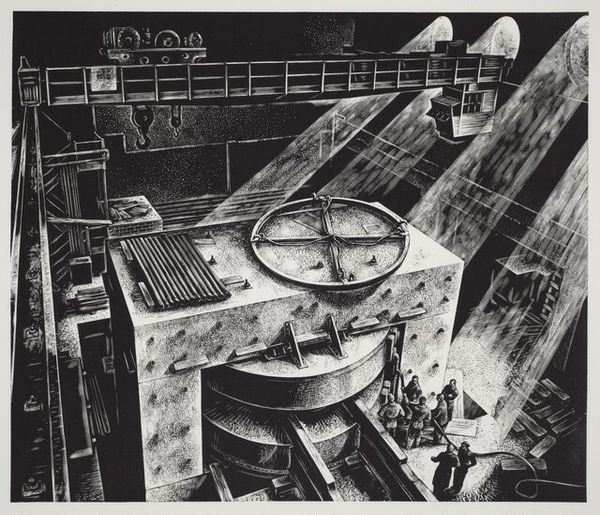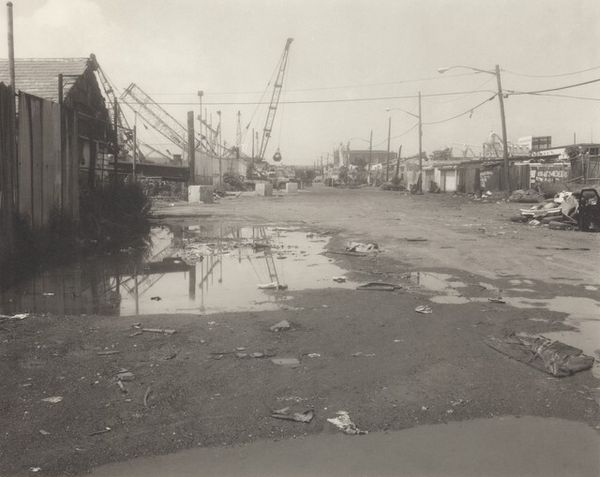
photography, gelatin-silver-print
#
precisionism
#
black and white photography
#
landscape
#
photography
#
black and white
#
gelatin-silver-print
#
monochrome photography
#
cityscape
#
monochrome
#
modernism
Dimensions: image: 24.1 x 19.3 cm (9 1/2 x 7 5/8 in.) sheet: 24.5 x 19.7 cm (9 5/8 x 7 3/4 in.)
Copyright: National Gallery of Art: CC0 1.0
Curator: Paul Strand’s “The Docks, New York,” captured in 1922 using gelatin silver print, presents a striking industrial landscape. What impressions does it conjure for you? Editor: There's an almost eerie stillness to it. A starkness that speaks to the gritty reality of urban labor. It feels... expectant, like a machine waiting to roar to life, or perhaps already silenced after a long shift. Curator: Precisely! The geometric clarity and tonal range are masterfully employed. The composition directs our gaze along intersecting lines, highlighting the interplay of form and shadow. There's a conscious reduction, an essentialization of industrial forms. It’s Modernism embracing the machine aesthetic. Editor: While I agree with your read of form, I wonder, who benefits from this aesthetic? What are the ethics of its presentation? I’m thinking about the daily lives of dockworkers during that time period—labor conditions, socioeconomic disparity. Curator: But doesn’t Strand’s precision offer its own commentary? The very absence of human figures prompts reflection on their labor, their presence implied rather than explicitly depicted. We can also consider how this work typifies straight photography of the time with its use of pure photographic techniques, minimal manipulation. Editor: That “absence” speaks volumes! The focus on structure risks sanitizing a brutal system. Whose stories get silenced? How did this era in New York define and confine immigrant workers, for example? I think the picture, though visually compelling, skirts some important historical questions. Curator: I find that interpretation persuasive. Though one may certainly ponder, does such a formal exercise become less beautiful if born of a troubled milieu? Editor: It changes the context for the viewer. Once we account for its historical position, “The Docks” gains a layer of complexity—a potent and important complication that, for me, doesn't diminish the aesthetic value so much as enrich the conversation around it. Curator: Well, regardless, the work showcases the period’s fascination with industrial subject matter. Editor: Yes, and through your highlighting of form, and my focusing on its political context, the image yields insights that spark vital conversations.
Comments
No comments
Be the first to comment and join the conversation on the ultimate creative platform.
